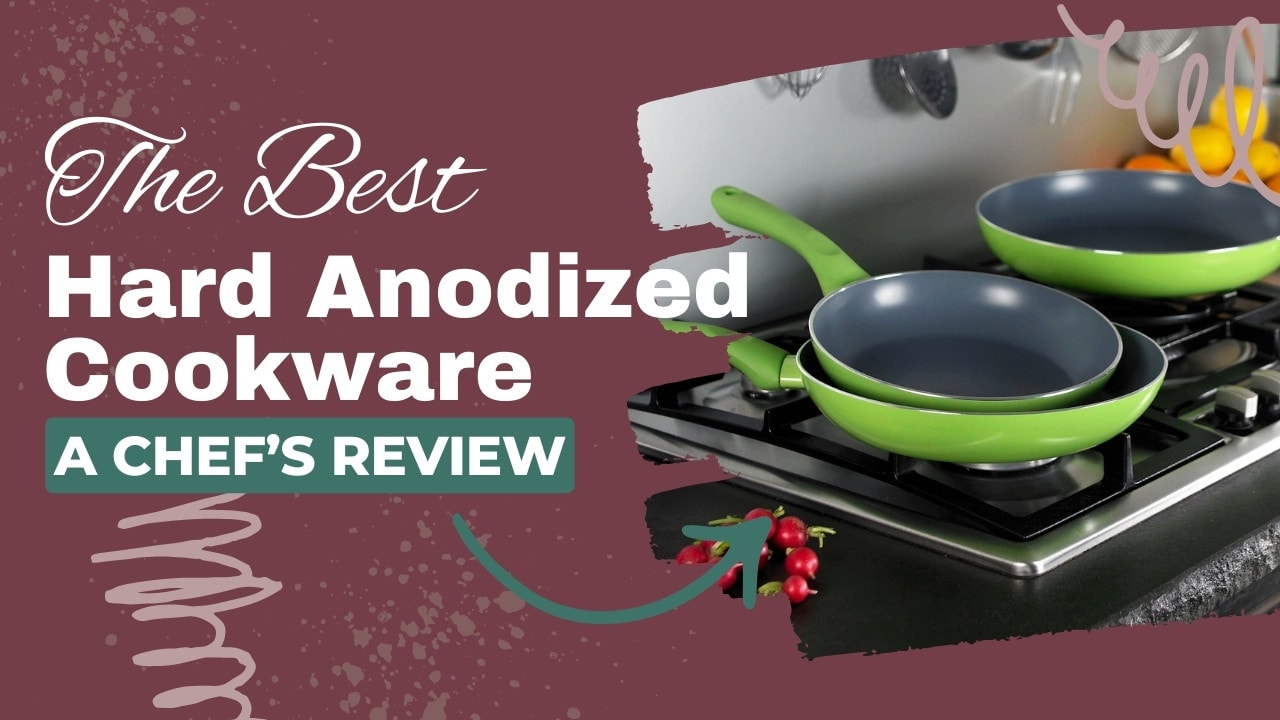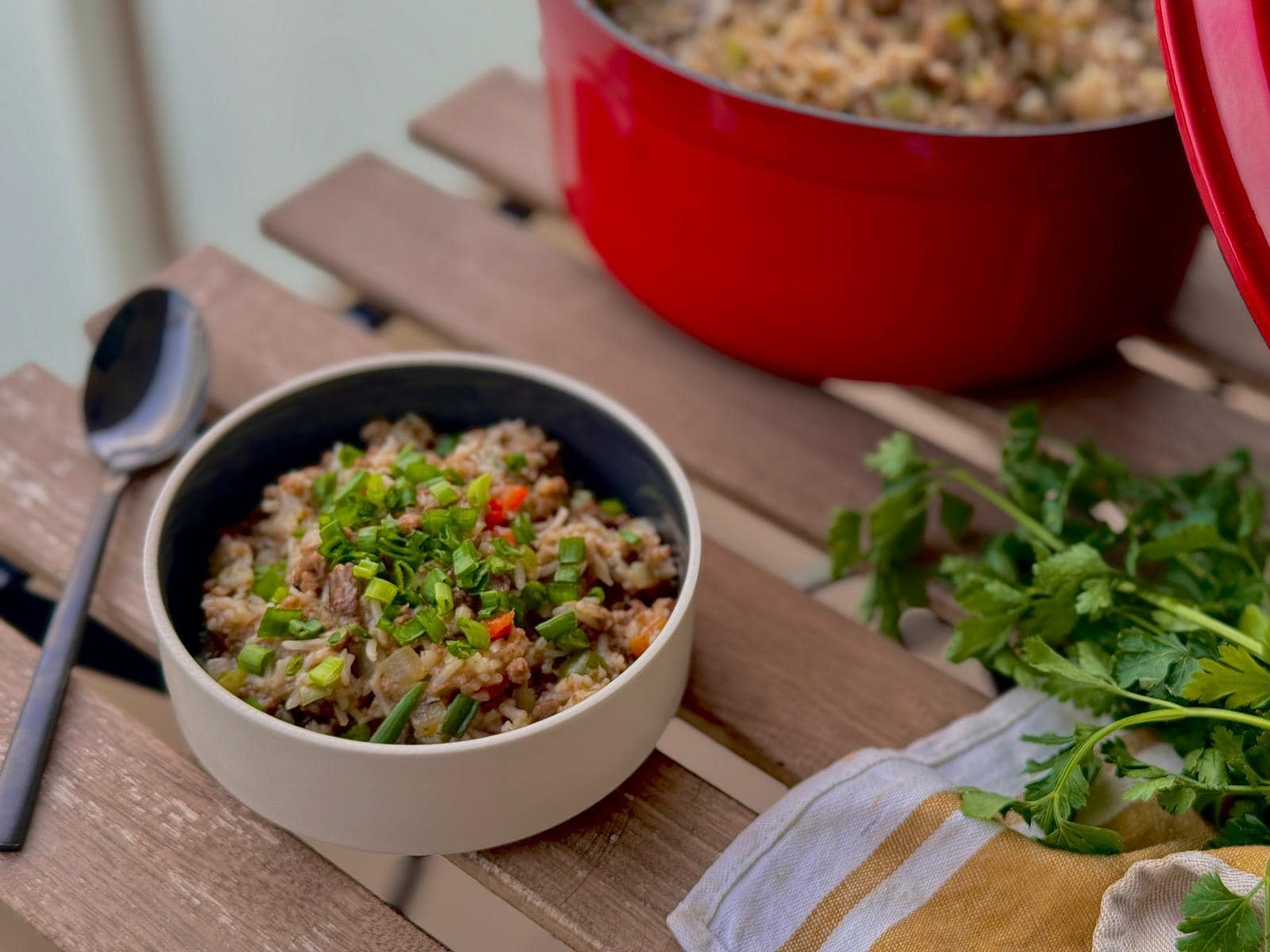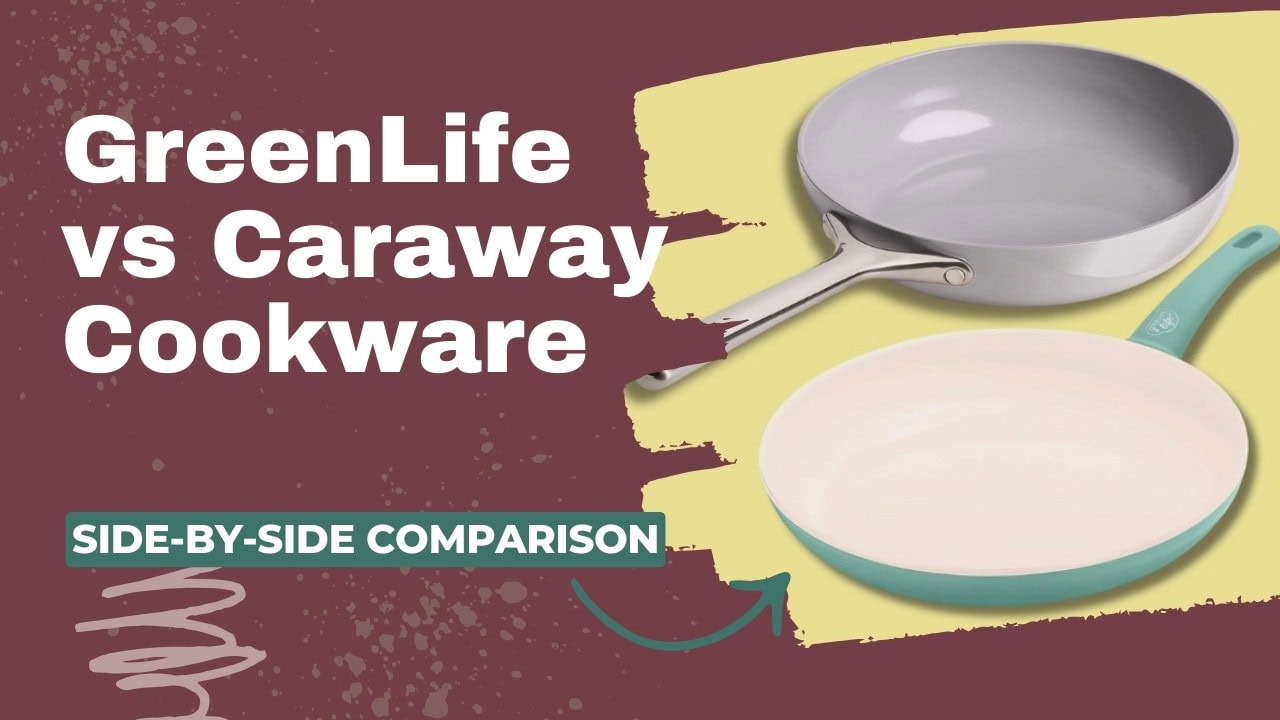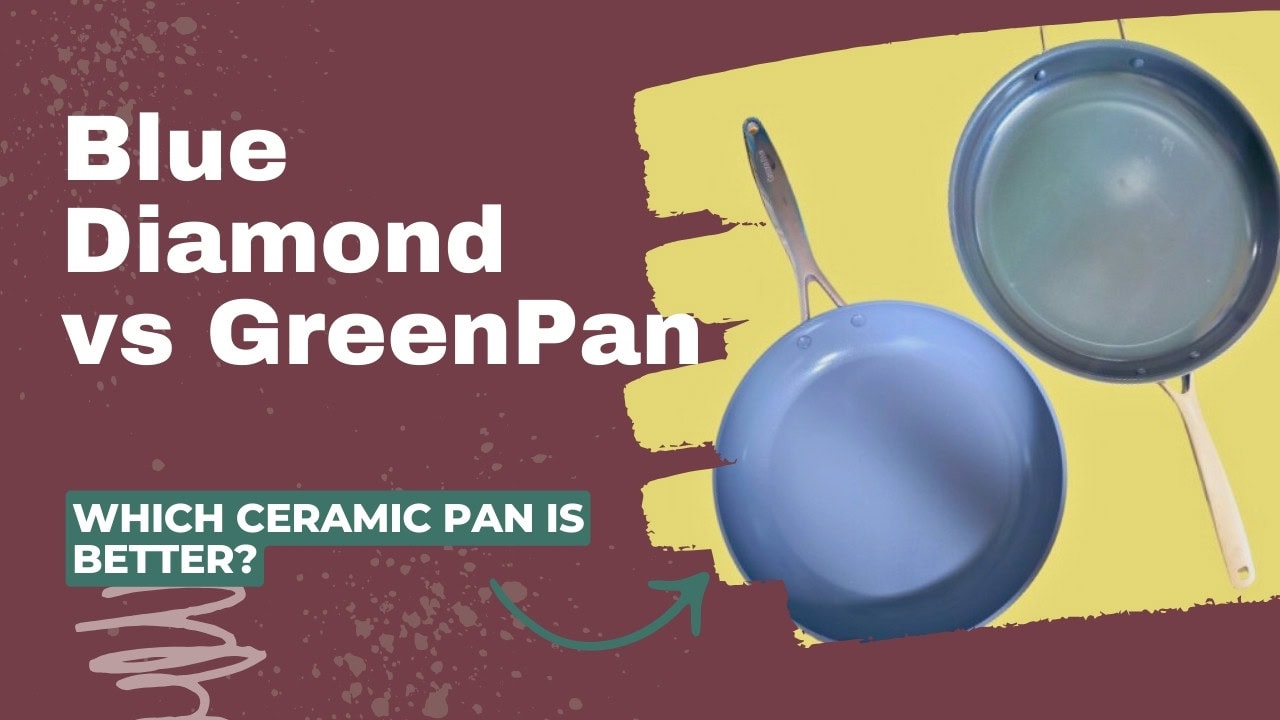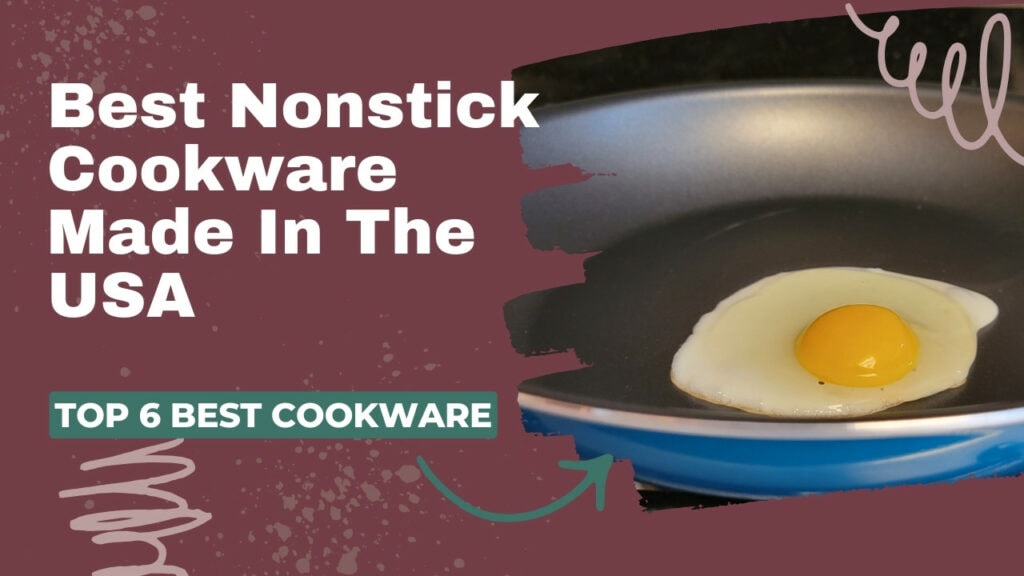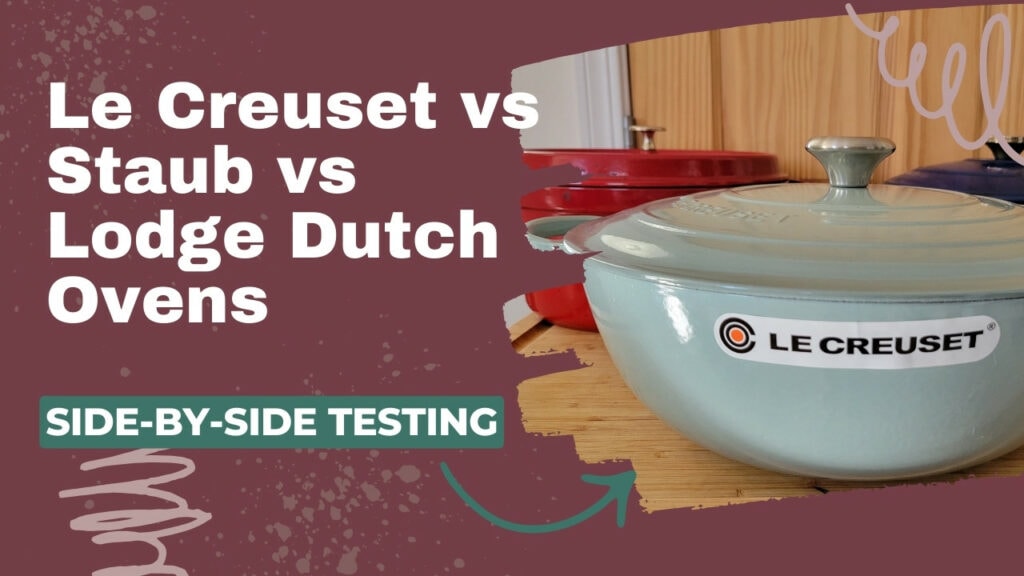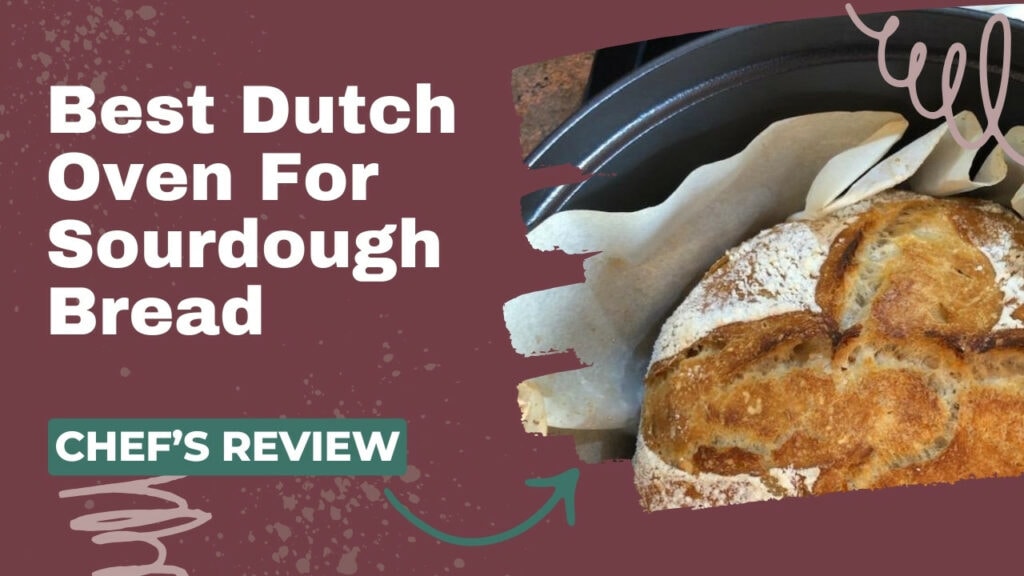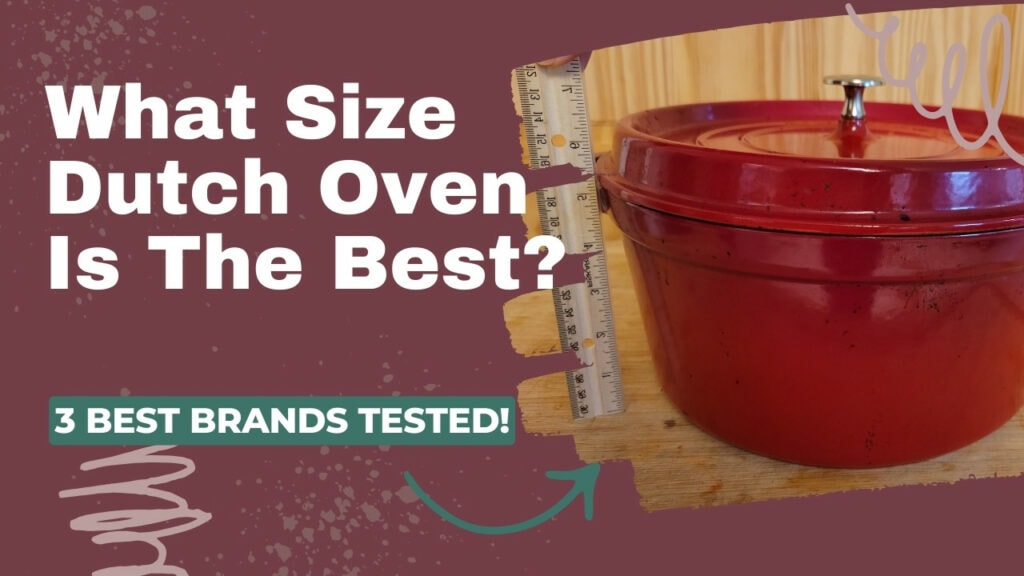Hard anodized aluminum is a material at the top of my list when I shop for cookware. It has unbeaten heat distribution with a durable surface that can last a long time if I look after it.
With hard anodized cookware, you get the great heat conduction and lightweight handling of aluminum while having a tough cooking surface that’s nonstick and very easy to clean. I mean, what else could you want in a piece of cookware?
Shopping for hard anodized cookware can be tricky, because virtually all hard anodized pans sold today are covered with another coat of nonstick finishing material. This guide will point you to five of the best hard anodized pots and pans that don’t have potentially hazardous Teflon (PTFE) coatings.
I also include a complete buying guide so you can make a well-educated buying decision.
What’s the Best Hard Anodized Cookware?
Food-grade hard anodized aluminum has been anodized to a depth of 0.3mm or more. All these pans nowadays come with an additional nonstick coating to make food release easily. I recommend avoiding PTFE-based nonstick coatings on your hard anodized cookware and going for ceramic coatings instead.
My top choice is the GreenPan Valencia Pro Cookware Set because it is made of multi-layer anodized recycled aluminum with an award-winning ceramic nonstick coating. The 16-piece set includes every pot or pan you might need, with the possible exception of a wok and ovenware.
GreenPan Valencia Pro 16pc Cookware Set - Best Hard Anodized Cookware Set
If you want to fully stock your kitchen with high-quality hard anodized cookware all in one go, then the GreenPan Valencia Pro 16pc Cookware Set is perfect for you! This set has a scratch-resistant and very durable surface across an array of pots and pans that covers every cooking eventuality you may encounter.
I love that these pans are induction compatible. Each one comes with GreenPan’s trademarked Magneto base made of thermally reinforced copper and iron, which aids in heat distribution and makes them work induction cooktops.
Quick Overview:
Pros
Cons
KitchenAid Hard Anodized Frying Pan - Best Hard Anodized Frying Pan
For me, this KitchenAid Hard Anodized Frying Pan ticks all the boxes! It has an incredibly efficient, healthy ceramic nonstick that works like a charm. The cuteness of the pan is the cherry on top! I love a pan that works perfectly and makes my kitchen Instagram-worthy at the same time.
The true test of frying pans is how they handle eggs, and this pan handles eggs with ease with just a tiny bit of oil. Although this pan must be hand washed only, I don’t mind because the clean up is so quick. The nonstick coating makes the food slide right off with regular detergent and a soft sponge.
Quick Overview:
Pros
Cons
Gotham Steel Hard Anodized Skillet Set - Best Hard Anodized Nonstick Cookware
This Gotham Steel Hard Anodized Skillet Set is just as effective as it is beautiful! The copper-look pans that the brand is known for look incredible in the kitchen, and they are a pleasure to cook with. The hard anodized base has excellent heat distribution. The triple layers of titanium and ceramic nonstick coating (branded as Ti-Cerama) make food slide right off as long as you do not overheat them.
Although the manufacturer claims these pans to be metal utensil safe, I would avoid using them on these skillets. Metal utensils are so harsh, and you don’t want to waste a pan from scratching the nonstick. I find that silicone utensils are just as effective and far less abrasive.
Quick Overview:
Pros
Cons
Gotham Steel Pro Ceramic Nonstick Pots and Pans Set - Best Hard Anodized Ceramic Cookware
If you liked the look of the skillet set I recommended above, but want a complete set, then I highly recommend the Gotham Steel Pro Ceramic Nonstick Cookware Set. There is a pot for every occasion in this 13pc set, all created from the same heavy-duty hard anodized aluminum with its trademarked Ti-Cerama nonstick that makes cooking with this set a breeze.
For me, it's really important to know that my cookware is going to hold up over time. After reading through customer reviews after review, I can confidently say that these pots will last very well over time, and the nonstick will stay intact as long as you use silicone and wood utensils.
Quick Overview:
Pros
Cons
GreenPan Lima Healthy Ceramic 5qt Pot - Best Hard Anodized Pot
This GreenPan Lima 5qt pot is the perfect all-purpose pot for soups, stews, and boiling pasta. Although it's a decent size for making larger dishes, the hard anodized aluminum makes this pan really light to handle for its size. I recommend this, especially for people with mobility issues that struggle to handle heavy pots.
GreenPan is known for its trademarked Thermolon nonstick coating because it is diamond-reinforced ceramic that is incredibly effective. It's even metal utensil safe, though if you are cautious, like me, you’ll avoid these in favor of silicone just in case.
Quick Overview:
Pros
Cons
Quality Hard Anodized Cookware - A Buyer’s Guide
So, as you can see, there are many incredible, high-quality hard anodized cookware options out there, but before you go out and spend your hard-earned cash, I want you to become more familiar with what you’re spending your money on.
So let’s explore precisely what hard anodizing is and what to consider to find the perfect hard anodized pan for you.
What is Hard Anodizing?
Hard anodizing is a chemical manufacturing process that oxidizes and strengthens the surface of aluminum. The aluminum is placed in a sulfuric acid bath, which is an electrolyte, and a low-voltage current is run through it. This causes a thin layer of aluminum oxide to form on the surface.
At this point, the aluminum is anodized but not yet hard anodized. Cookware that is labeled as aluminum but not hard anodized has been simply anodized. To complete the process, the bath is cooled to below freezing, and the electric current is increased substantially to create a thicker, more durable surface.
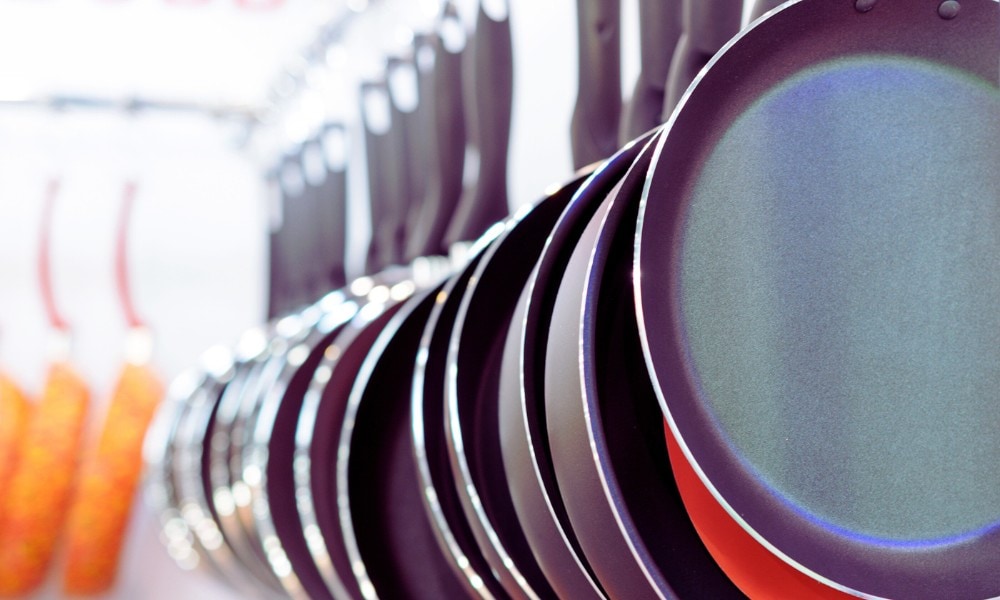
Hard anodized cookware is so durable because this anodization is 0.3mm deep; the oxidation is thicker than on regular anodized pans. Such thorough penetration creates a very durable, scratch-proof surface that is nonreactive, even to the acidic food that affects standard aluminum so severely. The process also makes the pans oven safe at higher temperatures, which increases their versatility considerably.
What is Infused Anodized Aluminum?
Infused anodized aluminum is another process used to improve the quality of regular aluminum, and it only slightly differs from regular anodizing. The aluminum is anodized, as I discussed above, but polymers are added to the bath.
These combine with the aluminum and the oxidizing particles to create a surface that is nonreactive to acidic foods while not being as durable as fully hard anodizing the surface.
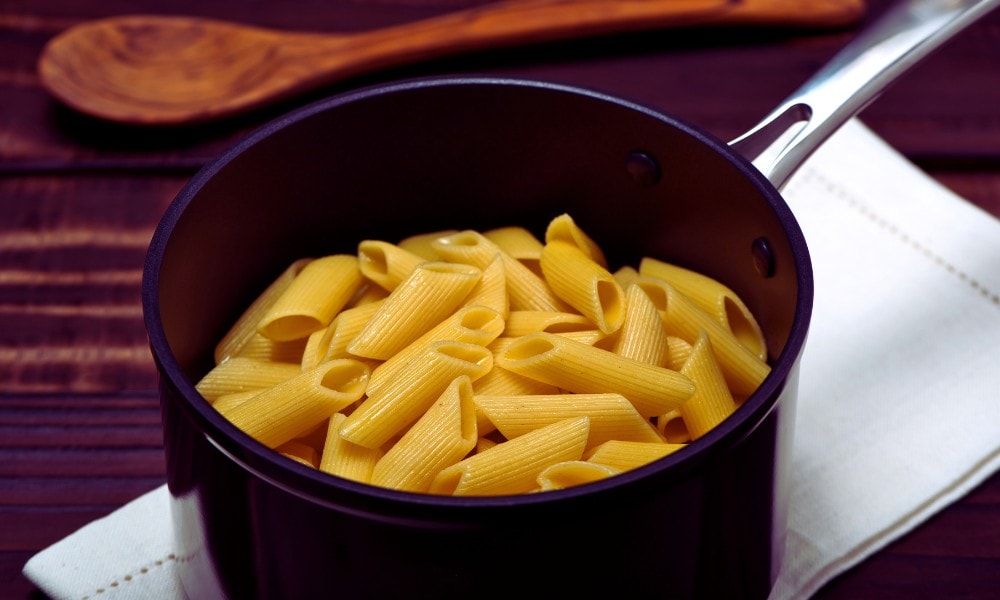
This is a cheaper option, but I recommend avoiding infused anodized pans because some dishwashing liquid can break down the surface.
Why is Hard Anodized Better than Natural Aluminum?
Aluminum is a common cookware material because it is lightweight with excellent heat conductivity, so it makes cooking a breeze. The issue with regular aluminum cookware is that it is easily scratched or dented and is reactive to acidic foods. While this might not be dangerous, it will add a metallic flavor to your food and discolor it slightly.
The reason someone may choose a regular aluminum pan over a hard anodized pan is the price difference. Aluminum is far cheaper than its hard anodized counterparts, but, in my opinion, hard anodized is well worth the extra cost.

Remember, also, if your regular (natural or cast) aluminum pan is covered in a nonstick coating, your food won’t react directly with the metal – unless the coating is scratched.
But now this begs the question? Is hard anodized cookware naturally nonstick?
Hard Anodized vs. Nonstick Fry Pans - Which is Better?
Let me put it this way: all hard anodized cookware is nonstick-coated, but not all nonstick-coated cookware is hard anodized aluminum.
Nonstick cookware can refer to pans made from many core metals, including copper and stainless steel, so it doesn’t exclusively refer to hard anodized aluminum.
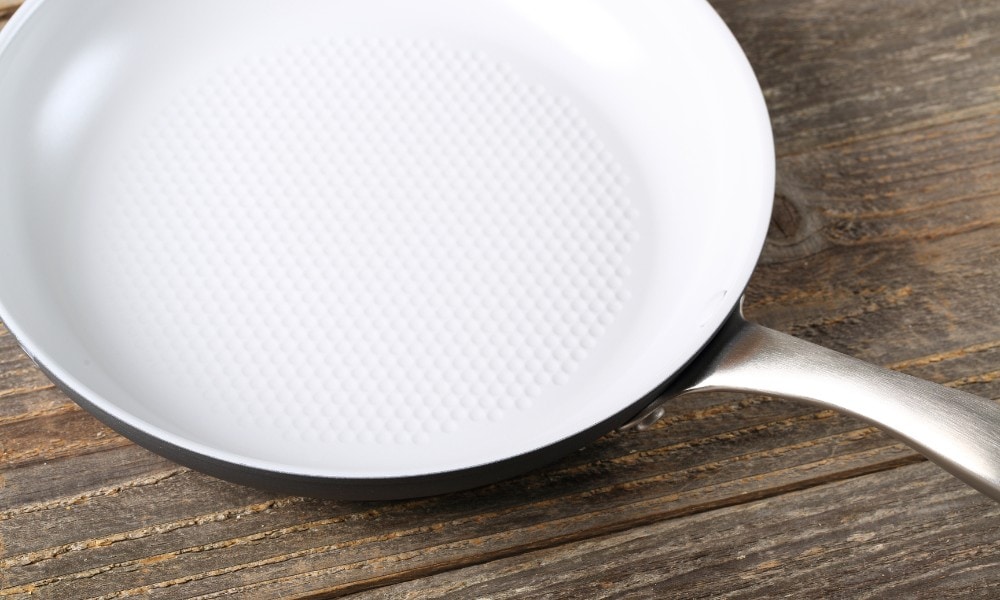
By nature, hard-anodized cookware is nonstick without a coating – but hard-anodized nonstick pans without coating are no longer available on the market, so the options on the shelves will either have a PTFE-based (Teflon) nonstick coating or a probably healthier PTFE-free coating like ceramic.
Whether you are buying hard anodized cookware or another material, I always recommend avoiding a PTFE-based non-stick coating due to the health risks I will get into later in this article.
Your Cooking Style Influences Your Purchase
I have mainly focussed on cookware sets in this list because they get you the best value for money, and all your pots and pans will match. But before you invest in any hard anodized pan – let alone a set – you need to think about how and what you cook.
If you cook very often and make various dishes and cuisines, a complete set will be your best move because you will get use out of every pot and pan. But if you are a simply fry something up or make pasta type of person, then it might be more economical to buy individual pots instead.
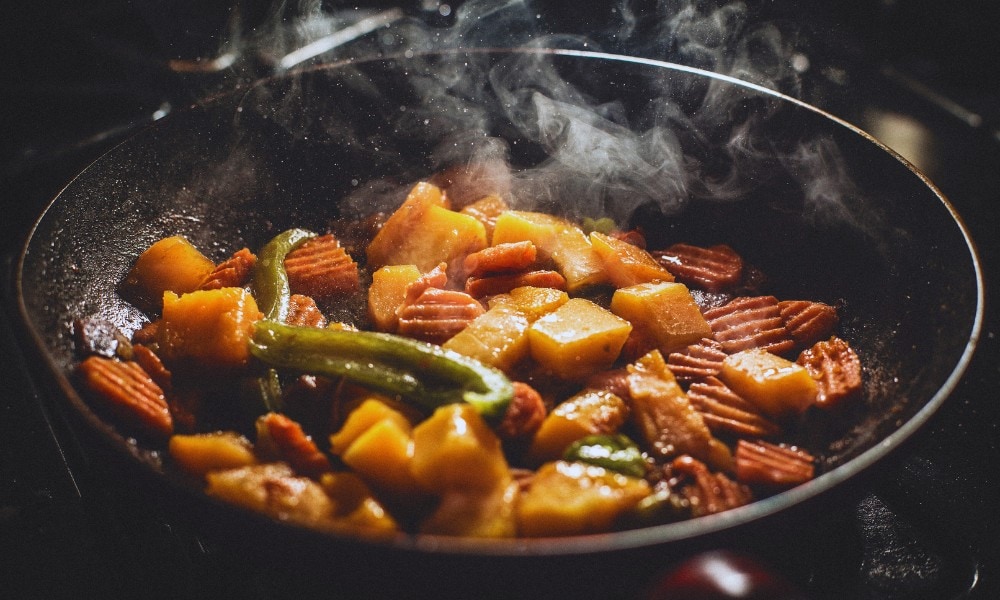
I recommend choosing a pan with a stainless steel handle. Stainless steel handles don’t heat up as quickly as aluminum, and it makes the pan oven safe.
Hard Anodized Aluminum Bakeware?
Unfortunately, if you are a baker, then you won’t be able to enjoy hard anodized bakeware because nobody makes it. (If you find a set, let us know in the comments!!)
But since aluminum conducts heat so evenly, I highly recommend this GreenPan Cast Aluminum Bakeware Set. It has a ceramic nonstick and even heat distribution, so your baked goods cook to perfection every time.

Construction, Durability, and Longevity
As you can see, hard anodized aluminum is made to be durable and last you years. The oxidation cannot wear off (although the nonstick coating can). These pans are also very hard wearing considering how light they are.
The best way to increase the longevity of your pan is to use a low flame on gas or medium heat on electric stoves, and clean and dry it well between each use.
Ease of Use and Cleaning
One thing that all the pots and pans on this list have in common is that they are super easy to use. If you treat it right, the nonstick coating releases food easily, and the pan heats quickly and holds that heat well.
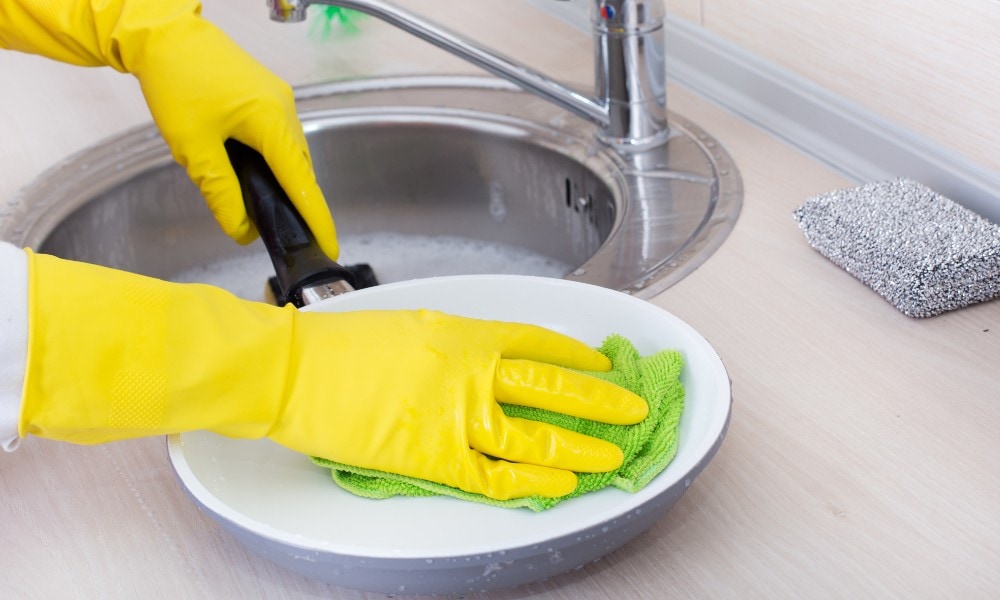
When it comes to cleaning, you need to carefully read the packaging to see if your particular pan is dishwasher safe. While the dishwasher is very convenient, most hard anodized pans are easy to clean by hand because the nonstick coating makes all food residue come right off. So even if your pan claims that it’s dishwasher safe, reality dictates that it will last longer if you gently hand wash it.
If you are hand washing, be careful to dry the pan fully to increase longevity.
Health, Safety, and Environmental Concerns
As discussed, hard anodized aluminum has an entirely nonreactive surface even in contact with acidic foods. So the base material is generally nothing to worry about with these pans. The health concerns come into play when we look at the nonstick coatings.
A large majority of nonstick coatings on the market are PTFE-based. PTFE, or polytetrafluoroethylene, is a chemical used in the manufacturing process of nonstick coating.
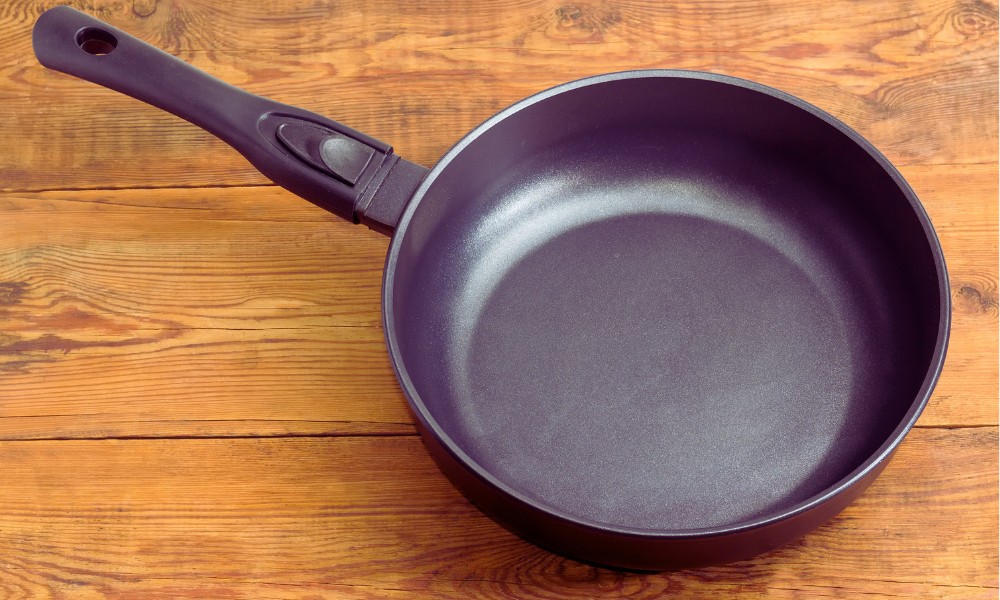
Teflon is the most well-known PTFE-based nonstick, but there is a plethora of other off-brand PTFE-based coatings on the market. They perform like magic, but, in the last few years, customers have started to veer away from these coatings because of the potential health risks.
To sum it up, overheating PTFE-based nonstick can create harmful fumes that cause ‘Teflon flu.’ Symptoms include chills, fever, headache, and body aches.
How do you find a Teflon-free pan?
In my buying experience, if a brand is PFOA and PTFE-free, they will shout it from the rooftops because so many consumers are actively trying to avoid these chemicals in their nonstick cookware.
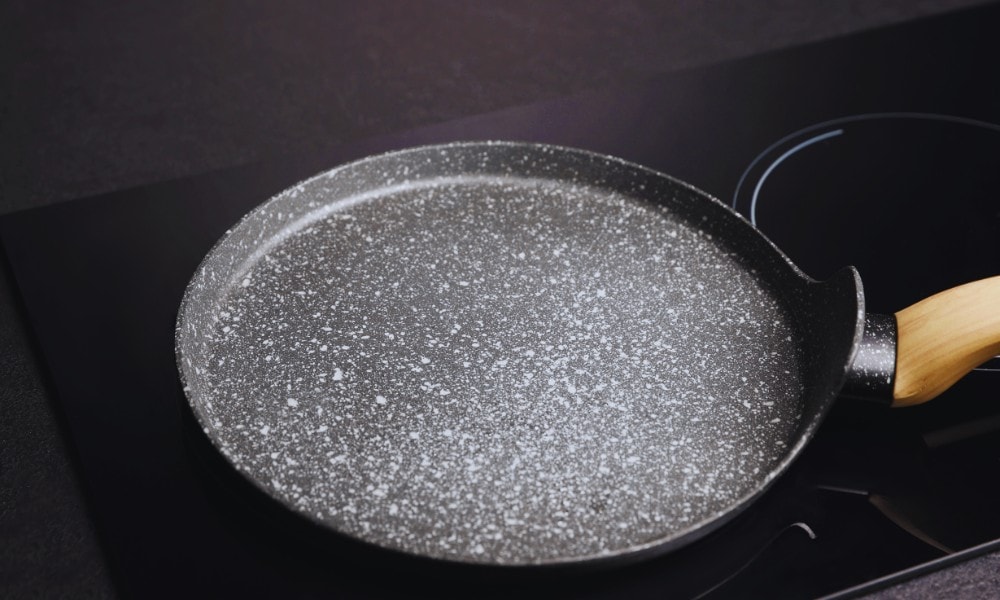
Many nonstick pans will be labeled ‘non-toxic’ to give the impression that they are chemical-free, but I dug past the marketing claims and read the manufacturing information to confirm these claims, almost always they are PTFE- based unless they are labeled ceramic.
Ceramic pans have coatings made from “sol-gel,” a coating made from silicone particles infused with titanium or other minerals and/or metals. There’s a wide variety of ceramic coatings on the market, as you can see in our product list above, but they all have a silicone base coating.
Accessories for Pots and Pans
Many of the hard anodized cookware options out there claim to be metal utensil safe, but I am always wary of metal around any nonstick surface. Metal utensils do eventually wear down even the toughest surface. So, in my eyes, it's just safer for the longevity of your pans to use wooden or silicone utensils that are just as effective and much more gentle.

If you have lids for your hard anodized pots and pans, place them on gently to avoid causing scratches.
Price
Hard anodized cookware is more expensive than regular aluminum, but the lifespan you get for that extra cost makes it worth it in my eyes. If you are on a budget, it is feasible to save up and buy one pan at a time, but if you can swing it, I highly recommend purchasing a set because it's excellent value for money.
Frequently Asked Questions
Are hard anodized or stainless steel pans more durable?
The process that hard anodized pans go through, that we went through above, creates a surface that is incredibly durable. It is approximately 30% harder than stainless steel, so the pan base will last you a lifetime if you care for it. The biggest weakness on hard anodized pans is the nonstick coating.
Does hard anodized cookware contain Teflon?
While hard anodized cookware doesn’t contain Teflon, the nonstick coating on it might. This comes down to which brand you’ve chosen and what coating they use. Teflon is a brand name for PTFE. So even if a pan is not the Teflon brand, it may still contain this potentially harmful PTFE coating.
In this list, I’ve only provided you with PTFE-free options because I believe they are the safest to cook with.
Is hard anodized cookware nontoxic?
On its own, hard anodized cookware is generally non-toxic and non-reactive. This doesn’t rule out every anomaly, such as a batch of aluminum that could be contaminated with lead or mercury.
As I discuss in this article, the biggest concern with hard anodized cookware is if it has a coating made from “forever chemicals.”
Some brands may claim that it is “PFOA free,” “100% safe,” or “non-toxic,” and it can still actually include PTFE, so it's important to research the nonstick coating well before purchasing.
Summary
Hard anodized aluminum is a foolproof cookware material that has great heat conductivity and excellent durability. I highly recommend investing in hard anodized cookware over regular aluminum because it will last a lifetime.
#1 Recommendation: GreenPan Valencia Pro Cookware Set
Out of this whole list, I highly recommend the GreenPan Valencia Pro 16pc Cookware Set for a great set and the KitchenAid Hard Anodized Frying Pan for the perfect individual pan.

